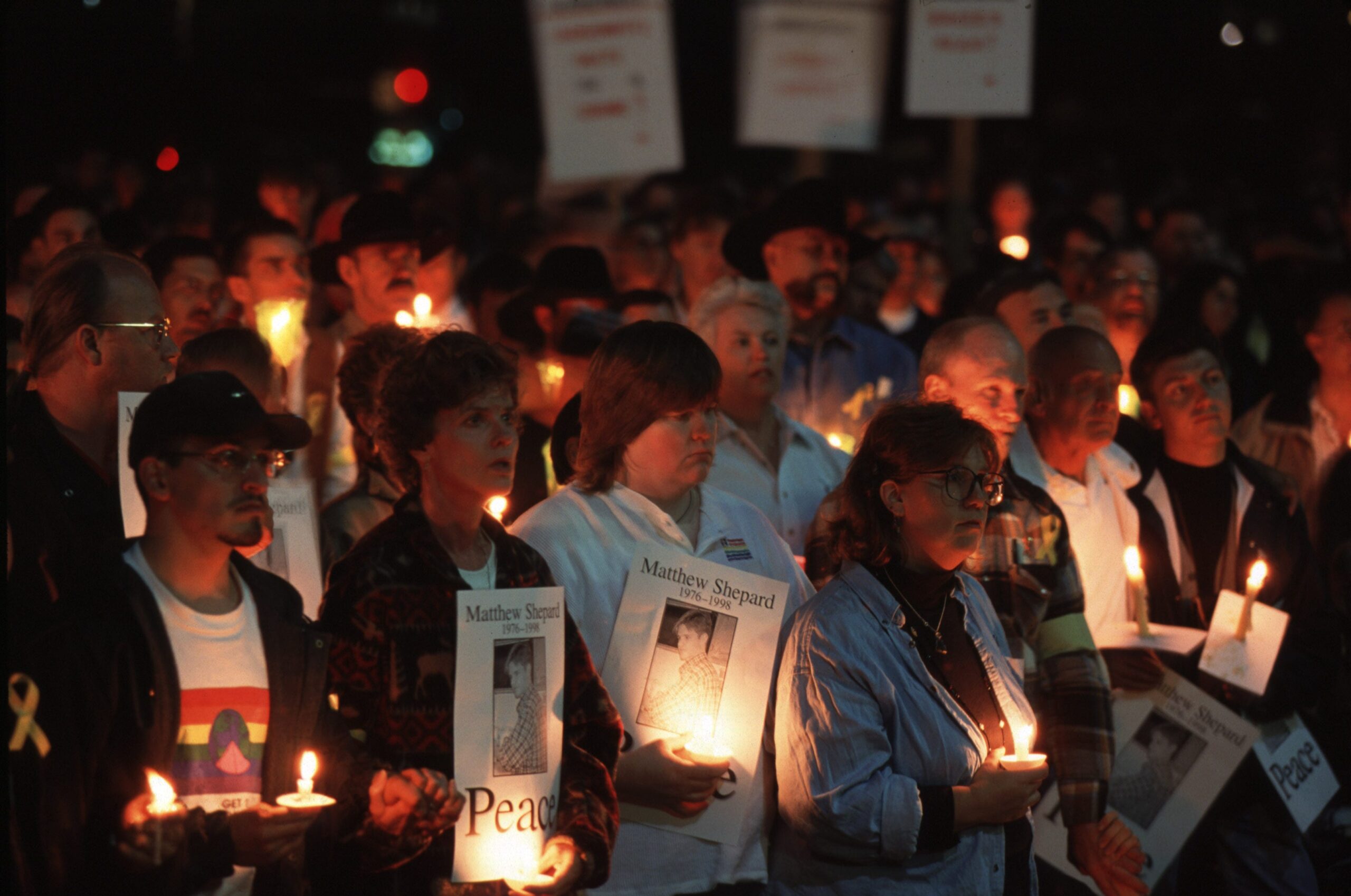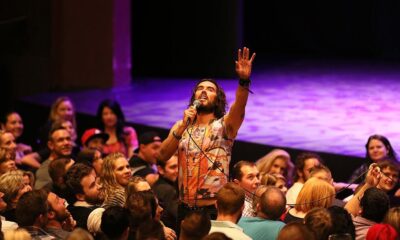Substacks
June 27, 2024 Heather Cox Richardson
Tonight was the first debate between President Joe Biden and presumptive Republican presidential nominee Donald Trump, and by far the most striking thing about the debate was the overwhelming focus among pundits immediately afterward about Biden’s appearance and soft, hoarse voice as he rattled off statistics and events. Virtually unmentioned was the fact that Trump lied and rambled incoherently, ignored questions to say whatever he wanted; refused to acknowledge the events of January 6, 2021; and refused to commit to accepting the result of the 2024 presidential election, finally saying he would accept it only if it met his standards for fairness.
Immediately after the debate, there were calls for Biden to drop out of the race, but aside from the fact that the only time a presidential candidate has ever done that—in 1968—it threw the race into utter confusion and the president’s party lost, Biden needed to demonstrate that his mental capacity is strong in order to push back on the Republicans’ insistence that he is incapable of being president. That, he did, thoroughly. Biden began with a weak start but hit his stride as the evening wore on. Indeed, he covered his bases too thoroughly, listing the many accomplishments of his administration in such a hurry that he was sometimes hard to understand.
In contrast, Trump came out strong but faded and became less coherent over time. His entire performance was either lies or rambling non-sequiturs. He lied so incessantly throughout the evening that it took CNN fact-checker Daniel Dale almost three minutes, speaking quickly, to get through the list.
Trump said that some Democratic states allow people to execute babies after they’re born and that every legal scholar wanted Roe v. Wade overturned—both fantastical lies. He said that the deficit is at its highest level ever and that the U.S. trade deficit is at its highest ever: both of those things happened during his administration. He lied that there were no terrorist attacks during his presidency; there were many. He said that Biden wants to quadruple people’s taxes—this is “pure fiction,” according to Dale—and lied that his tax cuts paid for themselves; they have, in fact, added trillions of dollars to the national debt.
Dale went on: Trump lied that the U.S. has provided more aid to Ukraine than Europe has when it’s the other way around, and he was off by close to $100 billion when he named the amount the U.S. has provided to Ukraine. He was off by millions when he talked about how many migrants have crossed the border under Biden, and falsely claimed that some of Biden’s policies—like funding historically Black colleges and universities (HBCUs) and reducing the price of insulin to $35 a month—were his own accomplishments.
There is no point in going on, because virtually everything he said was a lie. As Jake Lahut of the Daily Beast recorded, he also was all over the map. “On January 6,” Trump said, “we had a great border.” To explain how he would combat opioid addiction, he veered off into talking points about immigration and said his administration “bought the best dog.” He boasted about acing a cognitive test and that he had just recently won two golf club tournaments without mentioning that they were at his own golf courses. “To do that, you have to be quite smart and you have to be able to hit the ball a long way,” he said. “I can do it.”
As Lahut recorded, Trump said this: “Clean water and air. We had it. We had the H2O best numbers ever, and we were using all forms of energy during my 4 years. Best environmental numbers ever, they gave me the statistic [sic.] before I walked on stage actually.”
Trump also directly accused Biden of his own failings and claimed Biden’s own strengths, saying, for example, that Biden, who has enacted the most sweeping legislation of any president since at least Lyndon Johnson, couldn’t get anything done while he, who accomplished only tax cuts, was more effective. He responded to the calling out of his own criminal convictions by saying that Biden “could be a convicted felon,” and falsely stating: “This man is a criminal.” And, repeatedly, Trump called America a “failing nation” and described it as a hellscape.
It went on and on, and that was the point. This was not a debate. It was Trump using a technique that actually has a formal name, the Gish gallop, although I suspect he comes by it naturally. It’s a rhetorical technique in which someone throws out a fast string of lies, non-sequiturs, and specious arguments, so many that it is impossible to fact-check or rebut them in the amount of time it took to say them. Trying to figure out how to respond makes the opponent look confused, because they don’t know where to start grappling with the flood that has just hit them.
It is a form of gaslighting, and it is especially effective on someone with a stutter, as Biden has. It is similar to what Trump did to Biden during a debate in 2020. In that case, though, the lack of muting on the mics left Biden simply saying: “Will you shut up, man?” a comment that resonated with the audience. Giving Biden the enforced space to answer by killing the mic of the person not speaking tonight actually made the technique more effective.
There are ways to combat the Gish gallop—by calling it out for what it is, among other ways—but Biden retreated to trying to give the three pieces of evidence that established his own credentials on the point at hand. His command of those points was notable, but the difference between how he sounded at the debate and how he sounded on stage at a rally in Raleigh, North Carolina, just an hour afterward suggested that the technique worked on him.
That’s not ideal, but as Monique Pressley put it, “The proof of Biden’s ability to run the country is the fact that he is running it. Successfully. Not a debate performance against a pathological lying sociopath.”
A much bigger deal is what it says that the television media and pundits so completely bought into Trump’s performance. They appear to have accepted Trump’s framing of the event—that he is dominant—so fully that the fact Trump unleashed a flood of lies and non-sequiturs simply didn’t register. And, since the format established that the CNN journalists running the debate did not challenge anything either candidate said, and Dale’s fact-checking spot came long after the debate ended, the takeaway of the event was a focus on Biden’s age rather than on Trump’s inability to tell the truth or form a coherent thought.
At the end of the evening, pundits were calling not for Trump—a man liable for sexual assault and business fraud, convicted of 34 felonies, under three other indictments, who lied pathologically—to step down, but for Biden to step down…because he looked and sounded old. At 81, Biden is indeed old, but that does not distinguish him much from Trump, who is 78 and whose inability to answer a question should raise concerns about his mental acuity.
About the effect of tonight’s events, former Republican operative Stuart Stevens warned: “Don’t day trade politics. It’s a sucker’s game. A guy from Queens out on bail bragged about overturning Roe v. Wade, said in public he didn’t have sex with a porn star, defended tax cuts for billionaires, defended Jan. 6th. and called America the worst country in the world. That guy isn’t going to win this race.”
Trump will clearly have pleased his base tonight, but Stevens is right to urge people to take a longer view. It’s not clear whether Trump or Biden picked up or lost votes; different polls gave the win to each, and it’s far too early to know how that will shake out over time.
Of far more lasting importance than this one night is the clear evidence that stage performance has trumped substance in political coverage in our era. Nine years after Trump launched his first campaign, the media continues to let him call the shots.
—
Notes:
https://www.thedailybeast.com/all-the-crazy-things-trump-said-you-might-have-missed-in-biden-debate
https://www.politico.com/news/2020/09/04/trump-biden-presidential-debate-prep-408651
https://www.nytimes.com/2024/06/27/us/politics/trump-revenge-biden-convicted-felon.html
X:
stuartpstevens/status/1806528635391631485
ddale8/status/1806517477163061469
MoniquePressley/status/1806527221881847898
Substacks
What If the Most Notorious Murder of a Gay Man Wasn’t a Hate Crime? Ben Kawaller

Douglas Murray’s Things Worth Remembering column is taking a brief summer hiatus. The man deserves a break! He’ll be back in your inbox next Sunday, we promise.
But today we have something really important for you from Ben Kawaller.
This month—Pride month—he headed to the site of the most infamous anti-gay hate crime in American history. In October 1998, in the small town of Laramie, Wyoming, a 21-year-old college student named Matthew Shepard was brutally beaten to death because he was gay. Or that’s what we were told.
The murder was met with national outrage and mourning. And it became a rallying cry for a movement aiming to stamp out anti-gay hatred once and for all. As New York congressman Sean Patrick Maloney once put it: “Shepard is to gay rights what Emmett Till was to the civil rights movement.”
Ben—like me and so many others—grew up believing in the story of Matthew Shepard and what his murder meant about America. Or at least certain parts of the country.
But then, a few years ago, Ben heard another narrative. It caused him to wonder: Was the story we heard true? And what would it mean if Matthew Shepard wasn’t murdered for being gay, but rather for something more common—though equally as tragic? And why, when some investigative journalists discovered a more complicated truth, did so many people refuse to believe it?
So Ben Kawaller returned to the scene of the crime to talk to the people of Laramie and to ask them: What do they think ? And how did this murder—and the story about the murder—shape their understanding of themselves and their hometown?
Today, the real Matthew Shepard story. And why the full, complicated truth still matters.
Make sure to scroll to the bottom to watch Ben’s powerful report. —BW
Most people who’ve heard of the 1998 murder of Matthew Shepard remember the story. A gay 21-year-old college student in Laramie, Wyoming, approached two strangers at a bar. Offended by his advances and wanting to punish him for coming on to straight men, the two pretended they were gay only to lure Shepard into their truck. They then drove him to a prairie, tied him to a fence, bludgeoned him with a pistol, and left him there, barely conscious. He was found some eighteen hours later and taken to a hospital, where he died several days later.
I was fourteen at the time of Shepard’s murder and was maybe six months away from coming out of the closet myself. I had an inkling of what I was, though, and I experienced the news of Matthew’s murder with a hefty sense of relief that I was safely ensconced in a progressive neighborhood in Brooklyn, where I was being raised by the rare set of American parents who could have stood to instill more sexual shame in their children.
Mostly, though, the crime left me with a fear of my fellow citizens—more or less anyone outside the tristate area. Venture into the heartland, it seemed, and you could very well end up meeting a bloody death at the hands of a couple of rednecks out to teach a fag a lesson.
After all, that’s what happened in Laramie, according to the press. It’s also the version of the story immortalized by Moisés Kaufman and the Tectonic Theater Project, whose interviews with the people of Laramie served as raw material for their iconic play (and eventual HBO film) The Laramie Project. And it’s the story that continues to be told today by news outlets, LGBT advocacy groups, and school curricula.
Keep in mind that Shepard’s death came at a time when gay men and women were regularly reviled on the national stage. There had been major cultural gains in the late ’90s. Will & Grace had premiered only two weeks before Shepard’s murder, for example. But government and religious leaders were still very much in the business of denigrating homosexuals. A gruesome homophobic murder felt like just the kind of thing that might take place in a society where senators openly compared homosexuality to alcoholism and pastors blamed gay tolerance for terrorist attacks.
The murder led to a national outpouring of sorrow and rage. “In our shock and grief, one thing must remain clear: hate and prejudice are not American values,” said President Clinton. It also made activists out of Shepard’s parents, Judy and Dennis, who still run the Matthew Shepard Foundation, which aims to “amplify the story of Matthew Shepard to inspire individuals, organizations, and communities to embrace the dignity and equality of all people.” The organization, whose most recently available tax documents reveal an annual revenue of around $1.2 million, credits itself with helping to pass a 2009 federal hate-crimes bill and with providing anti–hate crimes training to law enforcement officers. They have also “created dialogue about hate and acceptance” and compiled “resources” to support LGBT-related causes.
Evidently, someone feels these efforts have paid off: earlier this year, President Biden awarded Judy Shepard the Presidential Medal of Freedom. (The Matthew Shepard Foundation declined to participate in this story when I reached out for an interview.)
A cynic might note that a great deal of money has been invested in the Matthew Shepard story. And, as it turns out, the truth of the Shepard murder is indeed more complicated—and less politically palatable—than a story about a gay boy beaten to death by a couple of homophobic thugs.
Nearly twenty years ago, in the fall of 2004, ABC News ran a 20/20 segment, co-produced by the journalist Stephen Jimenez, positing that the attack on Shepard was motivated not by hatred of homosexuals but by drugs and money. That argument was fleshed out in Jimenez’s 2013 The Book of Matt: The Real Story of the Murder of Matthew Shepard, which reveals that Matthew Shepard had been dealing meth and was killed by a rival dealer who wanted to rob Shepard to pay his debts. His murderer, Aaron McKinney, is currently serving a life sentence, as is McKinney’s accomplice, Russell Henderson. (As Jimenez explains, Henderson was pressured into accepting a plea deal, despite his not having laid any blows on Shepard, in part because the county had enough money only for one trial.)
The backlash to Jimenez’s book was fierce. Though it garnered generally positive reviews in the mainstream press, many gay critics and activists assailed Jimenez’s reporting—though not always from a place of insight. “Why I’m Not Reading the ‘Trutherism’ About Matt Shepard” was the title of an op-ed in The Advocate. The reason given? “It feels lurid and cruel.” Media Matters published a supposed “debunking” of the book that tried to argue that Jimenez’s use of anonymous sources, many of whom were detailing involvement in criminal activity, invalidated his reporting.
Perhaps as a result of these responses, Jimenez’s insights failed to permeate the national consciousness. Nor have they made much of a dent in the gay consciousness, if my informal survey of fellow sodomites is any indication. Somehow, it wasn’t until 2019 that I caught wind of Jimenez’s argument. I immediately bought his book and devoured it in disbelief: How in the hell could so many of us believe a story that, upon investigation, appears to be fundamentally untrue?
That is the question that guides this special edition of Ben Meets America for The Free Press. I traveled to Laramie because I wanted to know why the legend of Matthew Shepard had endured for so long. And did the people of Laramie secretly doubt it? Or were they still true believers more than a quarter of a century later?
I came to Laramie for PrideFest, a weeklong program of cultural events produced by and for its small but vocal queer community. I interviewed a number of attendees, but I also mingled with the general public to get a sense of how the Matthew Shepard murder had affected those who lived there at the time, and what story they believed.
What I found was a microcosm of American polarization. On the one hand you had straight people, who seemed to believe the Shepard murder was mostly about drugs. On the other hand, you had the attendees of Laramie PrideFest, who thought it was about hate.
And yet even this straight/queer division ignores some nuance. For example, when I struck up a conversation in a coffee shop with a gay woman my age who grew up in Laramie, she said she thought Matthew Shepard had been killed over drugs. I wanted very badly to interview her on camera, but she wouldn’t allow it.
“It feels wrong in my heart,” she told me.
“I get it,” I told her. People don’t like to draw attention to themselves when they’re marching against the tribe.
“Why do you care about this?” she asked me, in all earnestness.
I told her the mythology around Matthew Shepard had damaged my perception of rural America—and maybe the rest of the nation’s as well. I told her I thought Laramie had been screwed—by the media, by Moisés Kaufman, by every contributor to The Laramie Project. I probably said something self-aggrandizing about this project being an olive branch, a gesture of amends from a member of the gay community to another community we had dragged through the mud. I may have said something about meth, and how devastating it has been, for everyone, but especially for gay people, though we don’t talk about this blight on our community that has taken so many lives—certainly many, many more lives than homophobia ever claimed.
I said all of that and asked her again, in my kindest voice: “I’d really love to interview you.”
She said she’d think about it. That was the last I saw of her.
Please click below to see the video of my time in Laramie, the town that gave birth to a myth that, it seems, it will never shake.
Ben Kawaller is a writer for The Free Press, and the host of our interview series Ben Meets America—which you can watch in full here. To listen to Bari talk to Ben about his reporting for this special report, click the Honestly episode below:
Do you have a unique perspective on this story? If so, we want to hear about it. Please write to us at letters@thefp.com.
And to support our work, become a Free Press subscriber today:
The Free Press earns a commission from any purchases made through Bookshop.org links in this article.
Substacks
June 29, 2024 Heather Cox Richardson

There are many things I would like to write, but I am home, finally, after many months on the road, and it has been a long week. I am going to bed.
Tomorrow, I will be out in my kayak in the place where I took this photograph, no matter what the skies decide to throw at me.
And after I have gotten my bearings, I will be back in the game.
Rest well, everyone.
Substacks
June 28, 2024 Heather Cox Richardson
-

 Awakening Video10 months ago
Awakening Video10 months agoThis is What Happens When You Try to Report Dirty Cops
-

 Substacks3 months ago
Substacks3 months agoTHE IRON-CLAD PIÑATA Seymour Hersh
-

 Substacks9 months ago
Substacks9 months agoThe Russell Brand Rorschach Test Kathleen Stock
-

 Substacks10 months ago
Substacks10 months agoA real fact-check of Trump’s appearance on Meet the Press Judd Legum
-

 Substacks8 months ago
Substacks8 months agoLetter to the Children of Gaza – Read by Eunice Wong Chris Hedges








